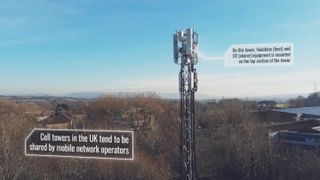If you've ever walked through a city you might have noticed tiny cell towers for 5G on street light poles. Article source appear like tiny boxes however, they're actually transmitting wireless signals from cell phone providers to your phone.
They are replacing larger specially-designed cell towers. While they're less noticeable but they can still cause issues for users.
faraday cage hat is the of the FCC's Radiation Exposure Thresholds
The FCC's Radiation Exposure Thresholds define the safe distance that one can expose to electromagnetic radiation from wireless devices. The exposure limits are based on scientific data which show that the energy of RF can cause harm to health.
faraday cage hat (SAR) is a measure of the amount of radiofrequency energy absorbed by tissue. It's typically 1.6 Watts per kilogram calculated over one kilogram of tissue.
Since 5g is able to transmit at higher frequencies and has the potential to increase the intensity of energy on the skin and other directly-exposed body areas. This can lead to a wide range of possible harms, like the appearance of skin conditions like dermatitis, cataracts, and skin cancer.
Due to the possible severe effects of 5g radiation, PSU has chosen to create a general power density limit of 4 mW/cm2 based on the average across 1 centimeter, but not exceeding 30 minutes for all 5G services running at 3000 GHz. This localized limit is consistent with the highest SAR spatial-average of 1.6 W/kg averaged over 1 5 grams of body tissue, at 6 GHz.
The FCC's Maximum Exposure Thresholds for Maximum Exposure
If you've ever used a mobile phone, you probably know that a safe location from the tower is around 400 meters. This is because the transmitting power of a cell tower increases dramatically the further away you are from it.
Although this may sound like a good idea but the truth is that people living in close proximity to towers might be more prone to health issues. For instance, a 2014 study in India found that residents who lived within 50m of cell towers experienced significantly more health complaints than those living further far from antennas.
This study found that people who moved into areas farther away from cell towers noticed their symptoms return to normal within a few days. Another study has demonstrated that exposure to extreme amounts of electromagnetic field radiofrequency (EMFs) could cause cancer, brain tumors as well as other health issues.
This is due to the fact that RF radiation, which is used for wireless communication, has the ability to be absorbed by the body's outer layer, the skin. It is vital to be aware of this since the skin serves as a shield against mechanical injury, infection caused by pathogenic microorganisms and the entry of harmful substances. The skin is the most important organ of the human body and is responsible for protecting other organs.

The FCC's Minimum Exposure Thresholds for the Minimum Exposure
The FCC's Minimum Exposure Thresholds are based on a variety of assumptions that aren't supported by scientific evidence. These include the erroneous assumption that exposures to RF radiation are safe due to the limited penetration into the body (i.e. thermal heating of tissue).
This assumption does not take into account the greater penetration of ELF components of modulated RF signals and the effects of brief bursts of heat from pulsed RF waves. These assumptions are not in line with the current understanding of biological effects of RF radiation. As such they shouldn't be relied upon for health-protection exposure guidelines.
Furthermore to that, ICNIRP and FCC are limiting their maximum exposure limits to local peak SARs, based on the peak speed of spatial absorption (psSAR), which can be described as an inadequate dosimetric tool for determining the level of radiation exposure. In particular it is inconclusive for frequencies that exceed 6 GHz. Additionally, psSAR hasn't been tested for RF radiation that is exposed to other environmental agents , such as sunlight. The interactions of RF radiations with different agents in the environment could produce synergistic or antagonistic effects. This can lead to the risk of having adverse health consequences. For example, co-exposure to RF radiation with sunlight may increase the risk of skin cancer, as well as aggravate other skin disorders, such as acne.
